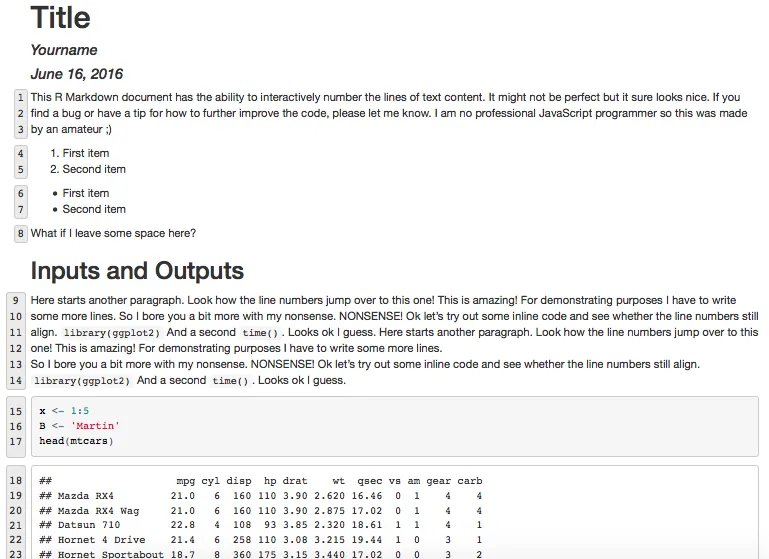我正在使用Rmarkdown撰写一份报告,需要在其中嵌入Rshiny代码块,因此需要将其渲染为html格式。请问是否有办法为文件添加行号?
重要的是,我需要为文本而不是代码块添加行号,就像这里所提到的那样。
我想知道是否可以在下面的.Rmd文件中添加一些CSS样式,但不知道该怎么做。
非常感谢您,
保罗
重要的是,我需要为文本而不是代码块添加行号,就像这里所提到的那样。
我想知道是否可以在下面的.Rmd文件中添加一些CSS样式,但不知道该怎么做。
---
title: "Title"
author: "Yourname"
date: "June 16, 2016"
output: html_document
runtime: shiny
---
This R Markdown document is made interactive using Shiny.
Unlike the more traditional workflow of creating static reports, you can now create documents that allow your
readers to change the assumptions underlying your analysis and see the results immediately.
## Inputs and Outputs
You can embed Shiny inputs and outputs in your document. Outputs are automatically updated whenever inputs change.
This demonstrates how a standard R plot can be made interactive by wrapping it in the Shiny `renderPlot` function.
The `selectInput` and `sliderInput` functions create the input widgets used to drive the plot.
非常感谢您,
保罗
